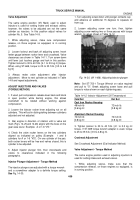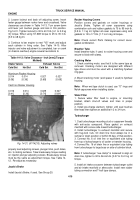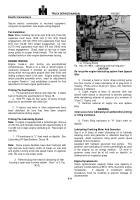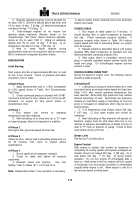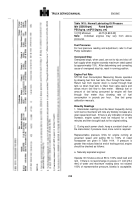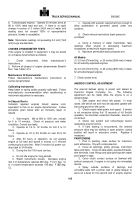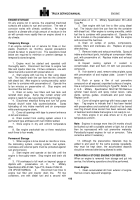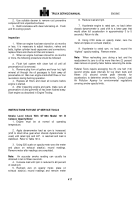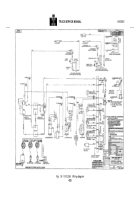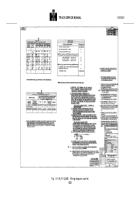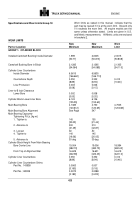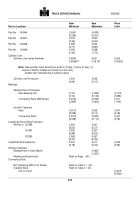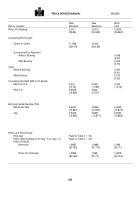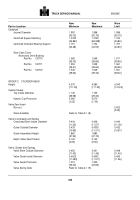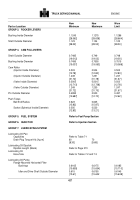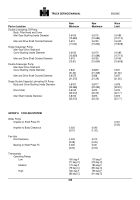TM-5-3805-254-14-P-2 - Page 423 of 894
TRUCK SERVICE MANUAL
ENGINE
Instrument and Control Group 15
TACHOMETER
Rated engine speed is the rpm attained at full load.
Governed engine speed is the highest rpm a properly
adjusted governor will allow the engine to turn, no load.
Governed engine speed must never be exceeded on
downgrades or any other condition in which the load
drives the engine.
Operate at partial throttle in continuous duty situations to
give required torque with the tachometer showing rpm
approximately 15 percent below governed speed.
OIL TEMPERATURE GAUGE
The oil temperature gauge normally should read between
180 deg.
F [82 deg.
C] and 225 deg.
F [116 deg.
C] for
best lubrication.
Any sudden increase in oil temperature
which is not caused by load increase is a warning of
possible mechanical failure and should be investigated at
once.
WATER TEMPERATURE GAUGE
A water temperature of 165 deg.
to 195 deg.
F [74 deg.
to 91 deg.
C] is the best assurance that cylinder liners
are heated to the proper .temperature to support good
combustion and that working parts of the engine have
expanded evenly to the most favorable oil clearances.
Overheating problems require mechanical correction.
It
may be caused by loose water pump belts, a clogged
cooling system or heat exchanger, or insufficient radiator
capacity.
Report
cases
of
overheating
to
the
maintenance department for correction; 200 deg.
F
[93.3 deg.
Cl maximum engine coolant temperature
should not be exceeded.
OIL PRESSURE GAUGE
The oil pressure gauge indicates any drop in lubricating
oil supply or mechanical malfunction in the lubricating oil
system.
The operator should note loss of oil pressure
immediately and shut down the engine before the
bearings are ruined.
Individual engines may vary from
above normal pressures.
Observe and record pressures
when engine is new to serve as a guide for indication of
progressive engine condition.
Instruments and gauges
show at all times how to get the most satisfactory service
from an engine.
Safety controls are used on Cummins
Engines to shut down the engine because of high coolant
temperature, low or loss of lubricating oil pressure and
engine speeds above rated rpm.
NASON SAFETY CONTROLS
The Nason (formerly Hawk) Safety Control System
provides protection from low lubricating oil pressure and
excessively high coolant temperature of preset values.
When either is exceeded, the controls disrupt the
electrical circuit to the fuel solenoid shutdown valve and
shuts down the engine.
The oil pressure safety control is
mounted directly in the main oil gallery.
The temperature
safety control mounts directly into the water manifold.
During cranking of engine a permissive start switch is
used to bypass the low lubricating oil pressure safety
control.
Actual cranking is accomplished by use of a push button
type starting switch wired into the cranking circuit.
See
wiring diagram Fig’s.
151, A and B.
419
Back to Top

